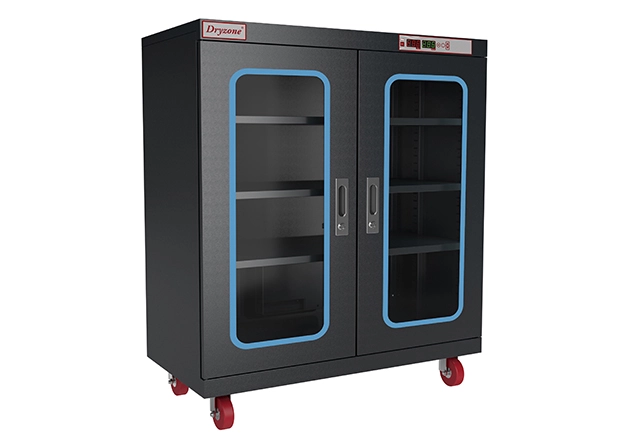 To Know Dryzone More
To Know Dryzone More
In industries where moisture-sensitive materials and equipment are used, such as electronics manufacturing, photography, and laboratories, a dry cabinet is essential. Dry cabinets ensure safe storage with precise humidity control, preventing rust, mold, and moisture damage. Dry cabinets maintain stable humidity levels, ensuring long-term reliability. But how exactly does a dry cabinet work to protect these valuable items from moisture and humidity?

The working principle of a dry cabinet relies on precise humidity control technology to create an optimal storage environment. Whether preserving camera gear or protecting lab equipment, understanding this mechanism ensures your valuables stay moisture-free. Upgrade your storage solutions with Dryzone's baking dry cabinet and experience superior humidity control. Below, we explore the science behind modern dry cabinets.
At its core, a dry cabinet operates on the principle of controlling the humidity level within an enclosed space. The dry cabinet creates a low-humidity environment by removing excess moisture from the air, ensuring the preservation and longevity of stored items.
The working mechanism of a dry cabinet involves several key components. The heart of the system is a dehumidifier, which is responsible for extracting moisture from the air. This dehumidifier can be based on various technologies, including desiccant, refrigeration, or the Peltier effect.
Desiccant-based dry cabinets use a moisture-absorbing material, such as silica gel or molecular sieves, to remove moisture from the air. The air is circulated through the desiccant, which adsorbs the moisture, resulting in a drier environment. Periodically, the desiccant cabinets need to be regenerated or replaced to maintain their effectiveness.
Refrigeration-based dry cabinets employ a cooling system to condense the moisture in the air. The air is cooled below its dew point, causing the moisture to condense into water droplets. These droplets are then collected and drained away, leaving behind drier air. The cooling system continuously cycles to maintain the desired humidity level.
Peltier-based dry cabinets utilize the Peltier effect, which involves the transfer of heat between two different materials when an electric current is applied. In this case, the Peltier module acts as both a cooler and a heater. When the current flows in one direction, it cools the air, causing moisture to condense. When the current is reversed, it heats the air, evaporating the moisture. This cycle ensures a controlled humidity level.
Regardless of the technology used, an industrial drying cabinet also incorporates a humidity controller. This controller allows users to set and monitor the desired humidity level inside the dry cabinet. It typically displays the current humidity reading and provides options to adjust the settings accordingly.
The construction of a dry cabinet is designed to provide an airtight and sealed environment. The dry cabinet is made of materials that prevent moisture from entering, such as stainless steel or high-quality plastic. The doors are equipped with rubber gaskets or magnetic seals to ensure a tight seal when closed.
When items are stored inside a dry cabinet, the dehumidifier continuously operates to maintain the set humidity level. The moisture in the air is gradually reduced, preventing the growth of mold, corrosion, or other moisture-related damage. This controlled environment ensures the optimal performance and longevity of sensitive equipment, electronics, documents, and other moisture-sensitive materials.
In conclusion, drying storage cabinets for component storage work by controlling the humidity level within an enclosed space. Through the use of a dehumidifier, whether based on desiccant, refrigeration, or the Peltier effect, excess moisture is removed from the air. The humidity controller allows users to set and monitor the desired humidity level, ensuring the protection and preservation of valuable items. With its airtight construction, a dry cabinet provides a secure and controlled environment, safeguarding against moisture-related damage.